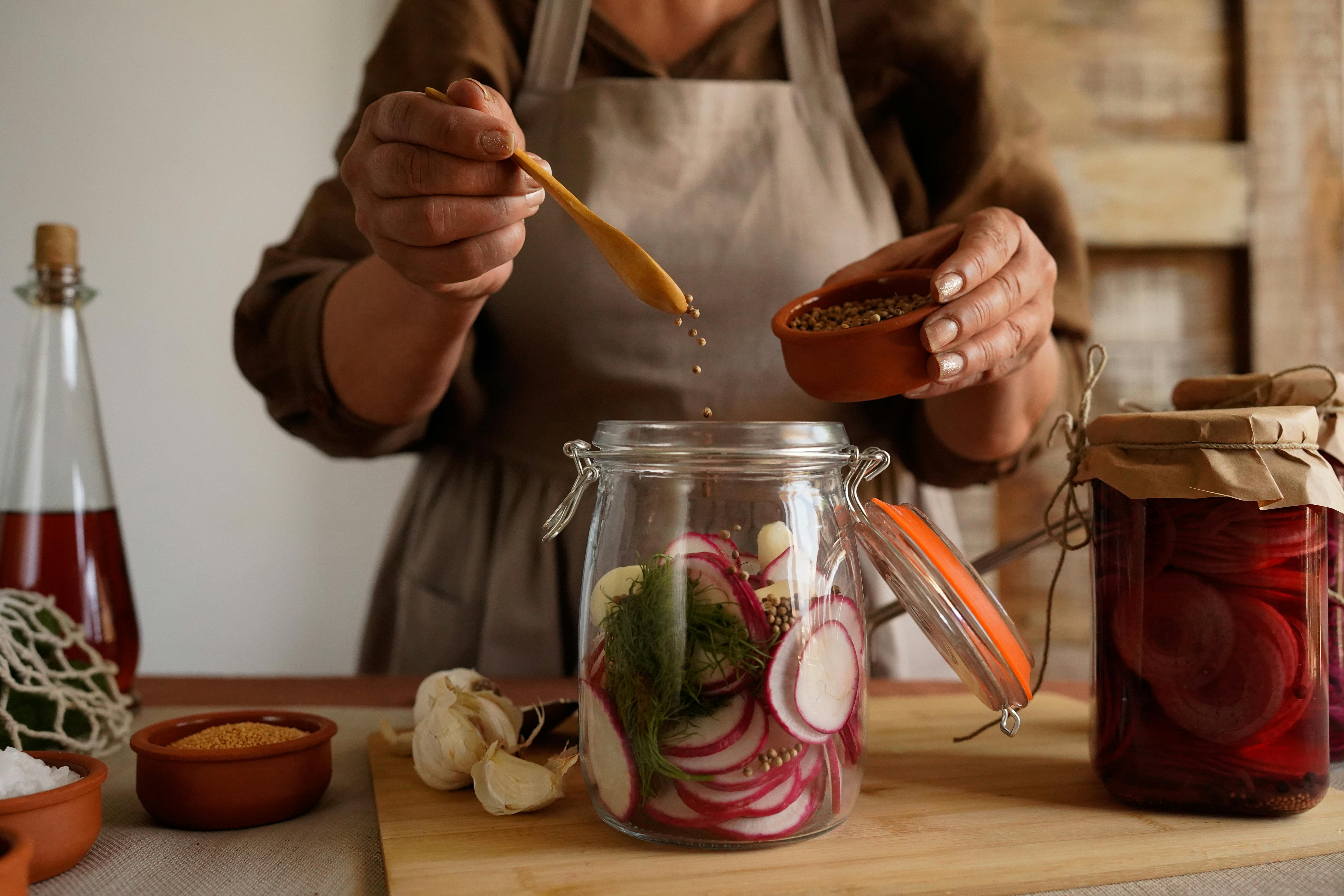Practical fermentation steps for steady flavor development
Practical fermentation steps help home cooks and small-scale producers develop consistent, balanced flavors over time. By focusing on ingredient quality, steady technique, and mindful preservation, you can create ferments that work across seasonal shifts and fit into mealplanning without sacrificing nutrition or texture.

Fermentation rewards patience and repeatable steps. To build steady flavor development, start with clear goals: the desired acidity, texture, and aromatic profile. Consistency comes from controlled technique, reliable sourcing, and modest adjustments rather than drastic changes. Keep a simple log for temperatures, salt ratios, and timing so successive batches converge toward the taste and mouthfeel you prefer.
How does seasonal selection affect fermentation?
Seasonal produce influences sugar content, wateriness, and natural microbial populations, all of which change fermentation dynamics. Summer vegetables may be sweeter and ferment faster, while winter produce tends to be heartier and requires longer time to develop acidity. Adjust salt ratios and fermentation time to compensate: salt slows fermentation and helps preserve texture, while cooler seasonal temperatures will extend the time needed for flavors to mature. Consider preserving a portion of peak-season crops to carry their flavors through leaner months.
What techniques support steady fermentation and preservation?
Technique is the backbone of predictable results. Measure salt by weight rather than volume, maintain stable temperatures, and use consistent vessel sizes to regulate oxygen exposure. Lactate-driven ferments (like sauerkraut) favor anaerobic conditions and moderate salt; alcohol- or yeast-driven ferments follow different microbial timelines. Simple preservation steps—clean tools, headspace control, and regular checks for off-odors—reduce spoilage risks and help steady flavor development across batches.
How do herbs, aromatics, and spices shape texture and flavor?
Herbs and aromatics introduce layers of complexity without masking the base vegetable or dairy notes. Fresh dill, garlic, ginger, and chili add bright top notes; whole spices like coriander or mustard seed release volatile oils over time. Use delicate herbs late in fermentation or at finishing to preserve their brightness; hardy aromatics can be included at the start to infuse deeper flavors. Spices may also affect perceived texture by altering saliva response and can help balance a ferment’s acidity.
How can recipes, pantry sourcing, and mealplanning help consistency?
Standardizing recipes and reliable pantry sourcing reduce batch-to-batch variability. Source vegetables with similar maturity and avoid blends from different farms when aiming for a repeatable result. Keep staple items—sea salt, filtered water, sterile jars—on hand to simplify mealplanning and make fermented components a regular part of menus. Recording small variations in produce sourcing, ripeness, or cultivar helps identify which inputs most influence final flavor and texture.
How should pairing, texture, plating, and nutrition guide final use?
Think about how fermented items will integrate with meals. Acidic ferments cut through rich foods; crunchy textures add contrast to soft dishes. When plating, use fermented elements sparingly to provide seasoning and balance rather than as a dominant component, unless the recipe calls for it. Fermentation can also enhance nutrition by increasing bioavailability of some nutrients and contributing beneficial microbes; however, effects vary with technique and ingredient, so consider them as part of a varied diet rather than a singular health solution.
This article is for informational purposes only and should not be considered medical advice. Please consult a qualified healthcare professional for personalized guidance and treatment.
Practical adjustments—consistent salt by weight, moderate and stable temperatures, and deliberate use of herbs and spices—are the clearest path to steady flavor development. Keep concise records, adjust based on sensory feedback, and treat each batch as data. Over time, these steps yield ferments with predictable acidity, balanced aromatics, and textures that complement your recipes and seasonal mealplanning.





